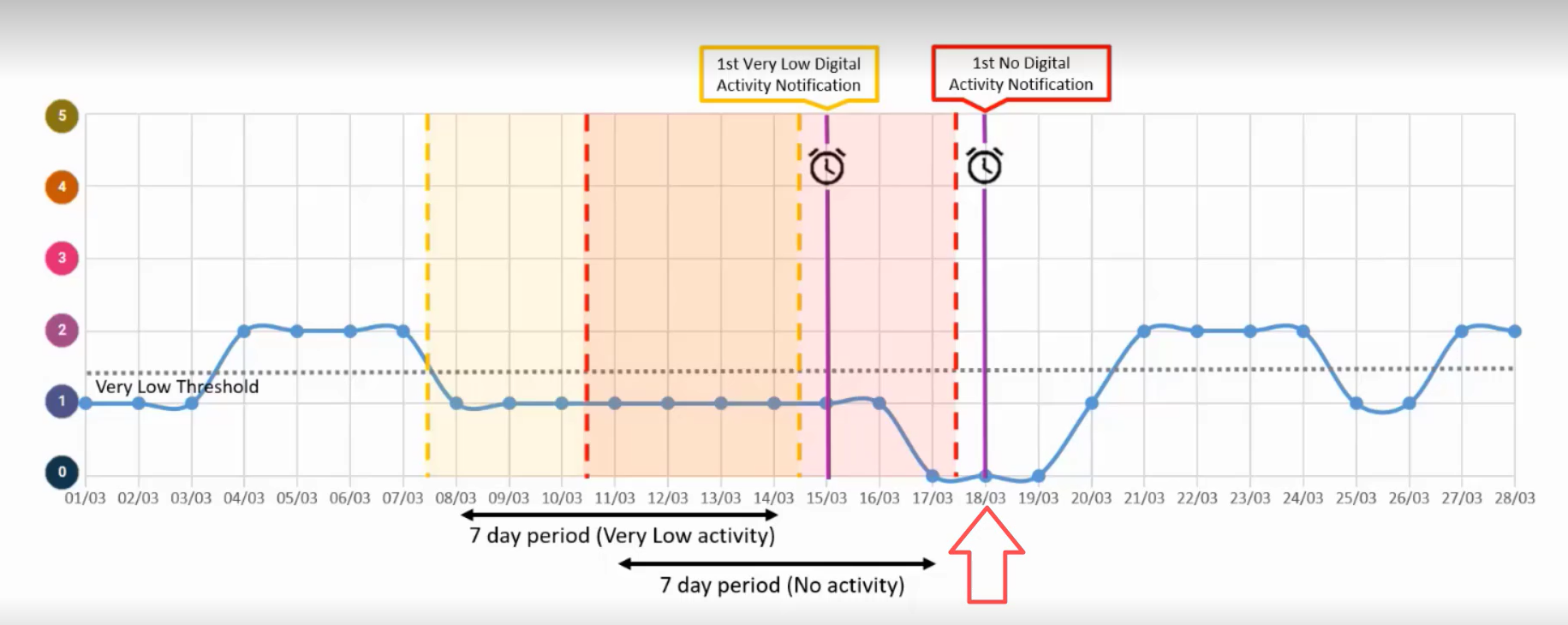How Very Low and No Engagement Notifications can trigger in the same week - SES Guide
In some cases, a student could potentially trigger two types of Notifications in the same week, let's look at how this can happen and what their StREAM@Leeds Dashboard might show.
- Low Engagement Notifications: flag when a student has either Very Low (1) or Low Engagement (2) for 7 consecutive days.
- No Engagement Notifications: flag when a student has been Inactive (0), (no engagement digital education systems or resources) for 7 consecutive days.
Both types of Notifications trigger on the 8th day.
If a student moves between No Engagement to Very Low or Low Engagement within the same 7 days, this can trigger multiple Notifications. In instances where a student triggers multiple Notifications, the most recent Notification should be taken into account as it is a truer reflection of how the student has been engaging with digital education systems most recently.
Student A Example: Triggering a No Activity Notification followed by a Very Low Activity Notification
In this example, the student's Engagement Ratings have fluctuated significantly over the last four weeks, going from 4 to 0 and up again. At the start of this period, the student's Engagement Ratings dropped to Inactive (0) before gradually increasing over the following days. This has resulted in two different types of Notifications being triggered within six days of one another.
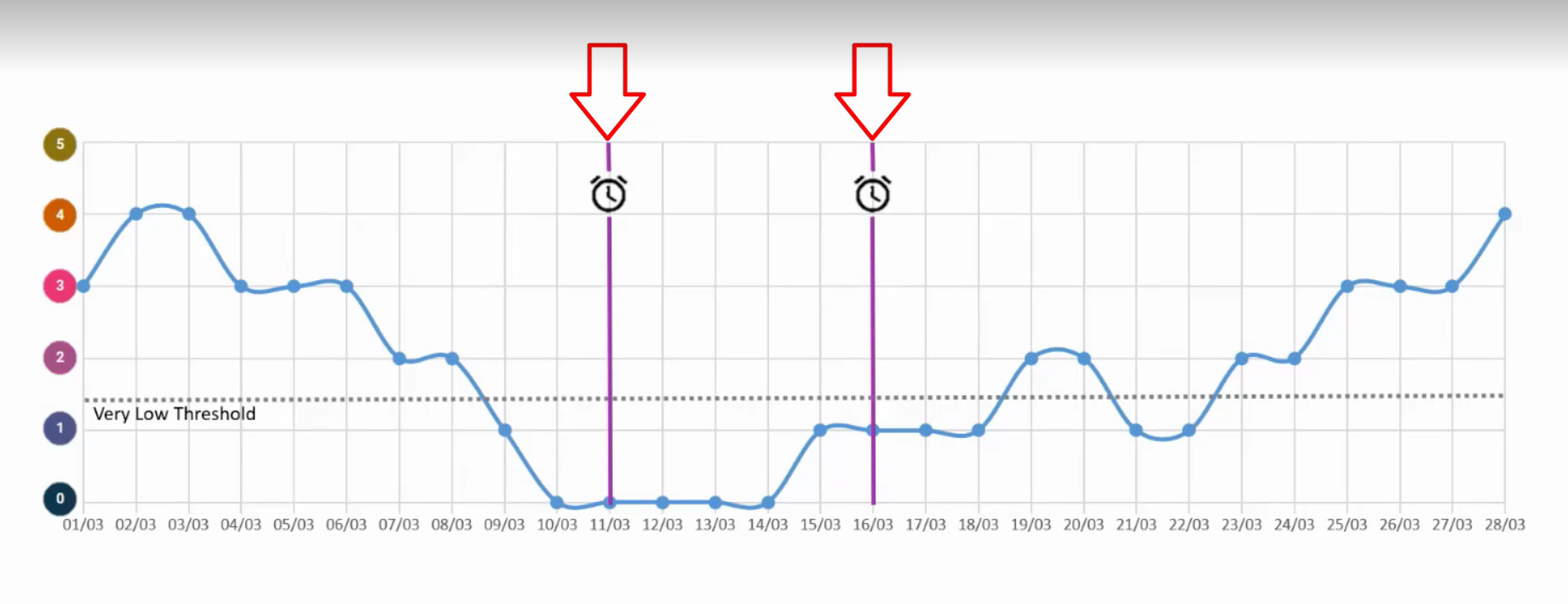
For the first Notification, if we review the student's Resources tab, this shows that they stop interacting with any digital education systems on the 4 March. They continue to have zero interactions with any digital resources until the 10 March. This means they have had a 7 consecutive day run of not accessing any digital resources, resulting in a No Activity Notification triggering on the 11th March.
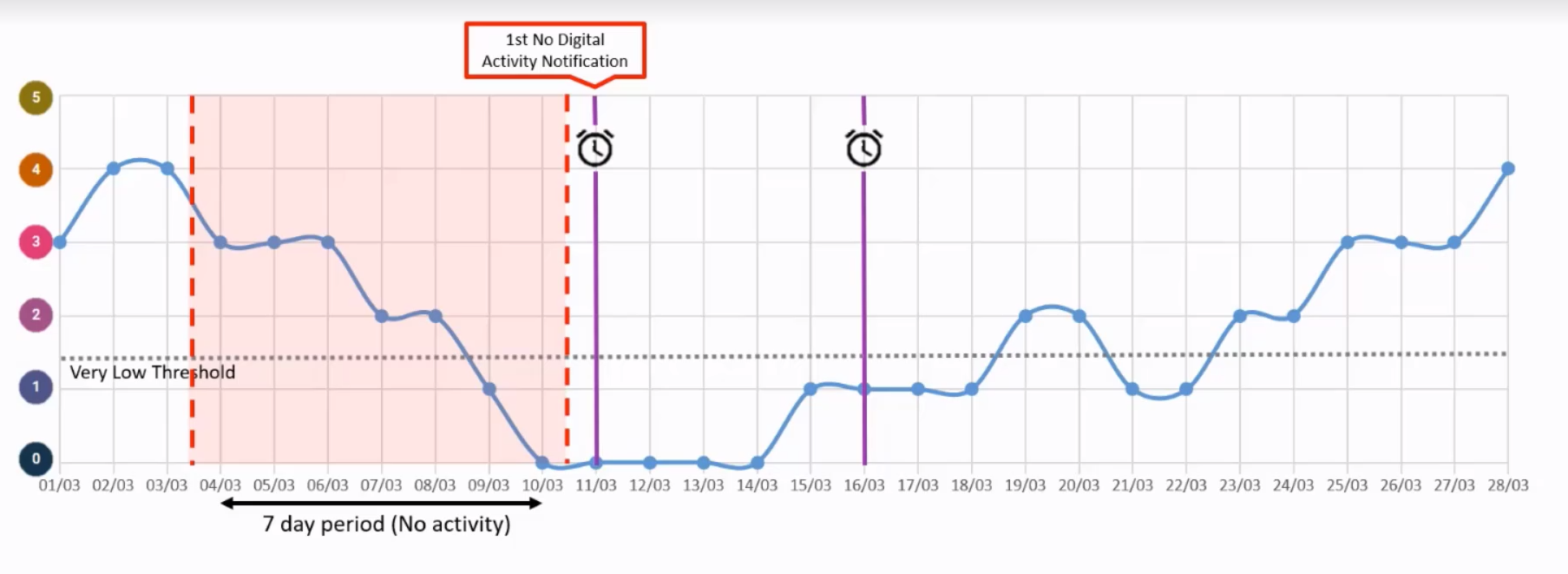
Their Learning Journey map shows an increase in engagement on the 15 March, which shows that they are interacting with digital resources to some level. As this interaction occurs within a 7 consecutive day period, a second No Activity Notification cannot be triggered at this point. However, a Very Low Notification can be triggered as the student has has 7 consecutive days with Very Low engagement at this point and one is triggered on the 16th March.
So in this example, the student first moves below the threshold for the Very Low Activity Notification on 9th March and remains there for seven consecutive days ending on 15 March. As the system only stops the same type of Notification triggering, their first Very Low Activity Notification triggers on the 16 March.

Student B Example: Triggering a Very Low Activity Notification followed by a No Activity Notification
In this example we can see the student is moving between Inactive (0), Very Low (1) and Low (2) over a four week period. At the start of this period, they stay within Very Low (1) engagement for a prolonged period, before finally dropping into Inactive (0). This results in two Notifications being triggered within four days of one another.
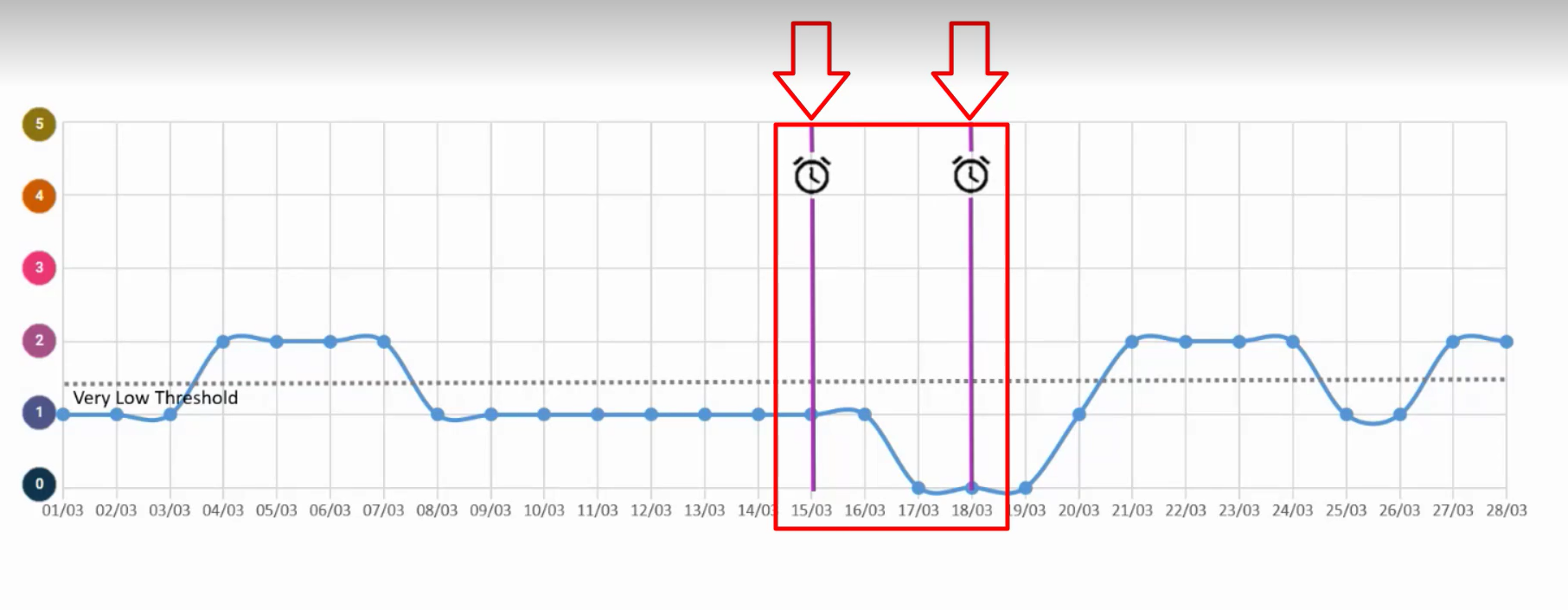 For the first Notification, the student moves into Very Low engagement (1) on 8 March. They then continue with Very Low engagement for a week, which results in a Very Low Activity Notification being triggered on 15 March.
For the first Notification, the student moves into Very Low engagement (1) on 8 March. They then continue with Very Low engagement for a week, which results in a Very Low Activity Notification being triggered on 15 March.
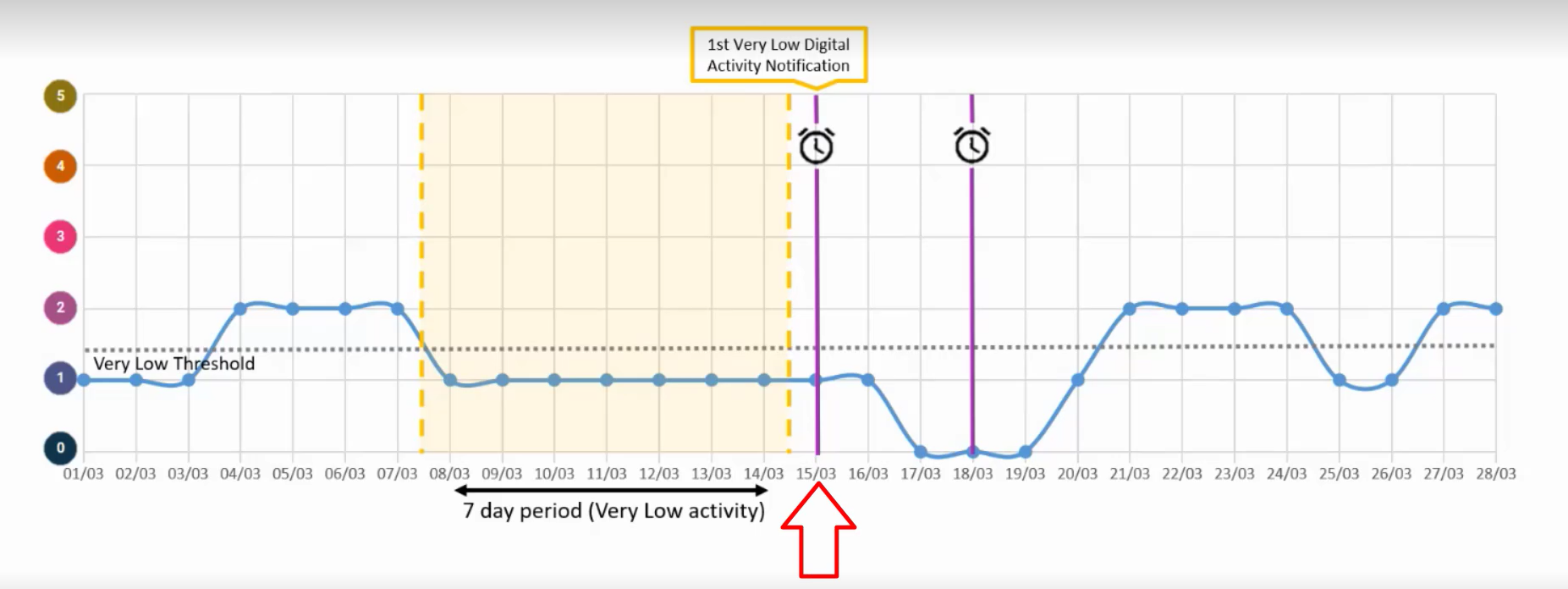
After this we see Engagement Ratings drop to show the student as Very Low on 21 March. As this is before another 7 consecutive day period has lapsed since the first Very Low Activity Notification, a second Very Low Activity Notification is not triggered.
A second Notification has been triggered on 18 March, however this is a No Activity Notification. This is because the student has not interacted with any digital resources between 11-17 March, resulting in them triggering the No Activity Notification on the 18 March.
